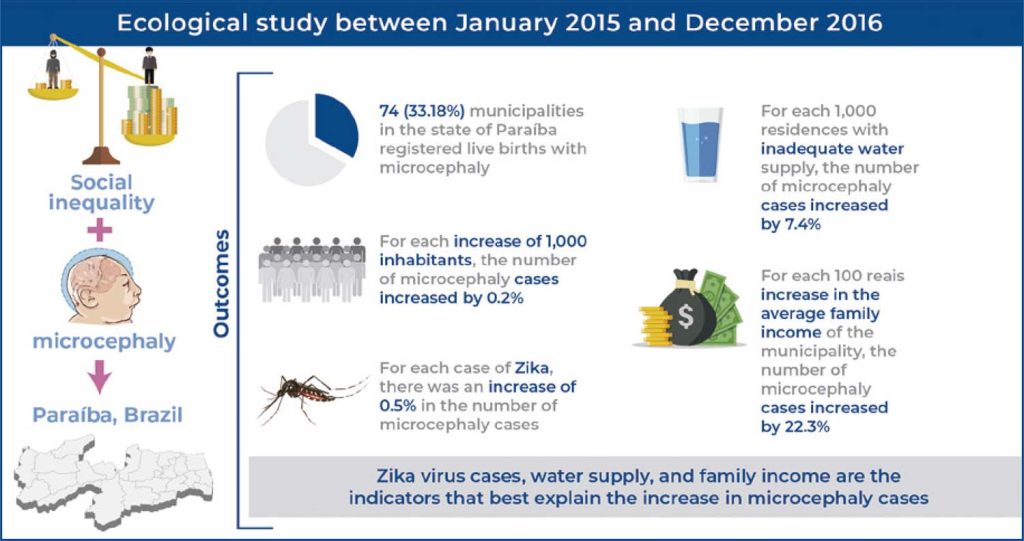einstein (São Paulo). 30/Mar/2023;21:eAO0043.
Relationship between microcephaly and indicators of social inequality in the state of Paraíba, Brazil
DOI: 10.31744/einstein_journal/2023AO0043
Highlights
Seventy-four (33.18%) municipalities in the state of Paraíba registered live births with microcephaly.
The highest proportion of cases (23.03%) was concentrated in the capital, João Pessoa.
Number of inhabitants, number of cases of Zika virus, water supply, and average household income were associated with a higher proportion of new cases.
ABSTRACT
Objective
To analyze the relationship between microcephaly and social inequality indicators in the state of Paraíba during the biennium January 2015 and December 2016.
Methods
Ecological study with data from newborn microcephaly records and municipal socioeconomic, environmental, and demographic indicators was conducted using two health information systems from the Brazilian Ministry of Health (SINASC and SINAN) and the Brazilian Institute of Geography and Statistics. A Poisson multiple regression model was applied with a significance level of 5%.
Results
Among 223 municipalities in Paraíba, 74 registered new cases of microcephaly. The number of Zika virus cases, number of inhabitants, number of households without adequate water supply, and household income were predictor variables of the number of new cases of microcephaly in Paraíba.
Conclusion
Microcephaly is associated with indicators of social inequality in Paraíba. Zika virus cases, water supply, and family income are the indicators that best explain the increase in microcephaly cases. Therefore, these variables must be monitored by health professionals and authorities.
237


